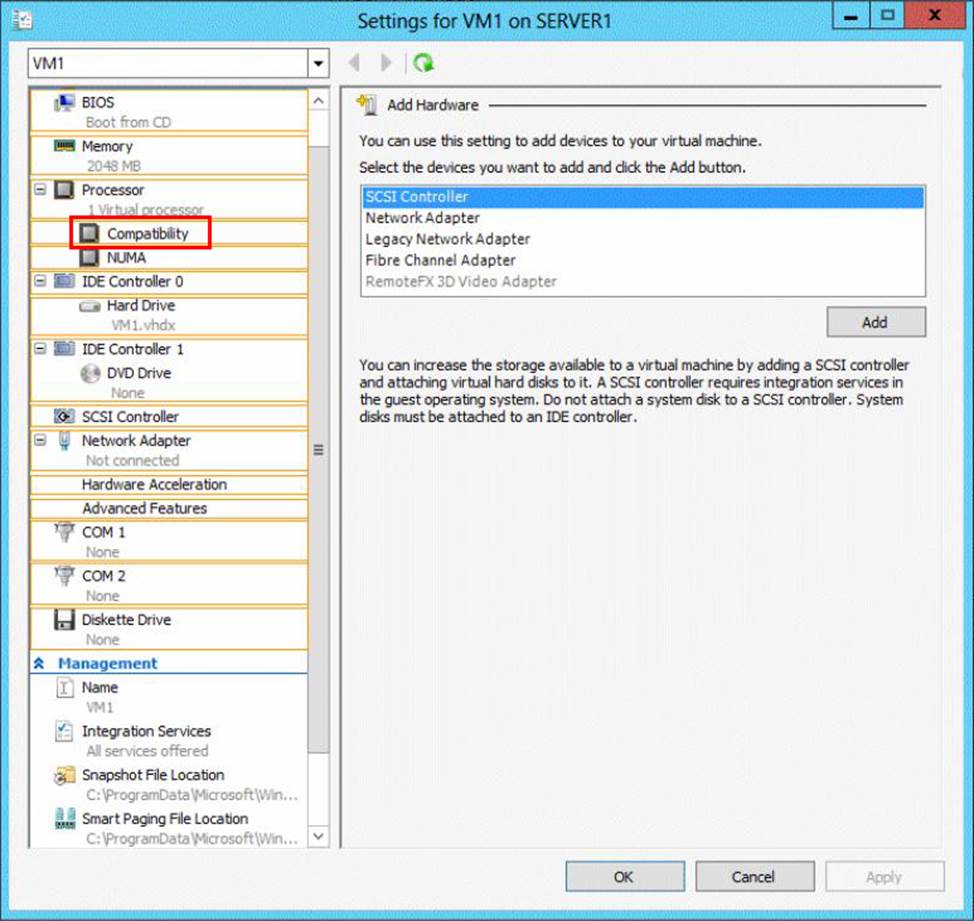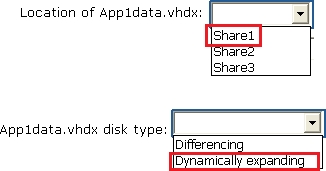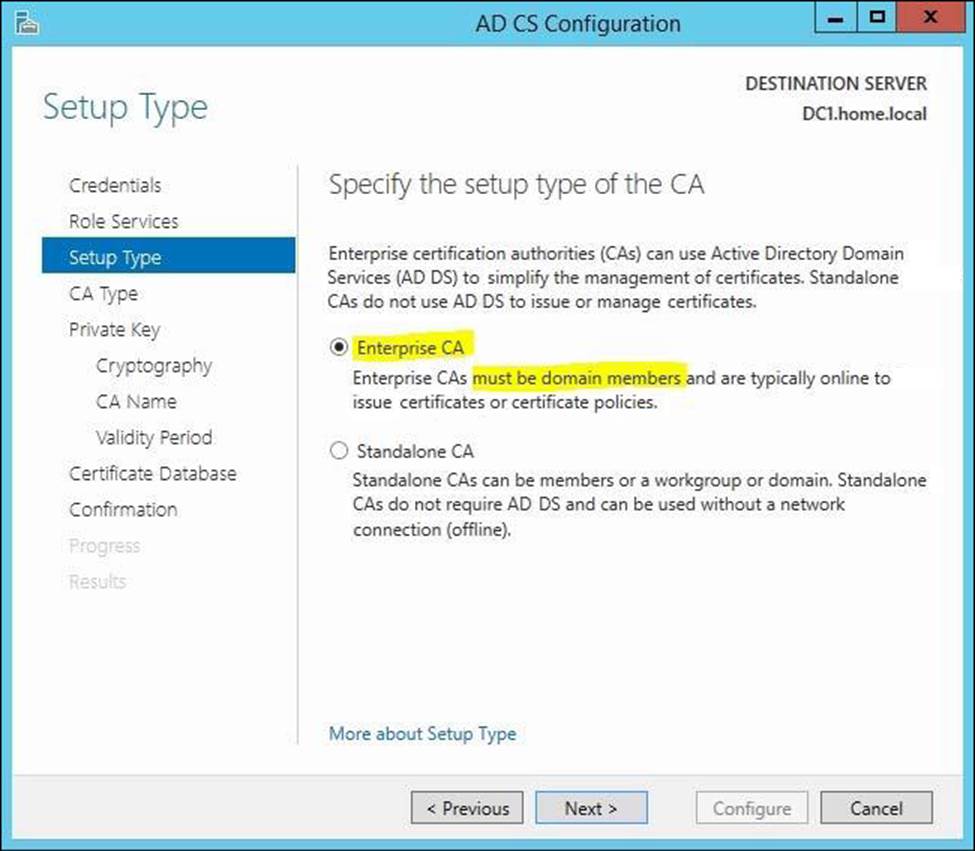Microsoft 70-412 Configuring Advanced Windows Server 2012 Services Online Training
Microsoft 70-412 Online Training
The questions for 70-412 were last updated at Apr 08,2025.
- Exam Code: 70-412
- Exam Name: Configuring Advanced Windows Server 2012 Services
- Certification Provider: Microsoft
- Latest update: Apr 08,2025
HOTSPOT
Your network contains an Active Directory domain named contoso.com. The domain contains two member servers named Server1 and Server2. All servers run Windows Server 2012 R2.
Server1 and Server2 have the Network Load Balancing (NLB) feature installed. The servers are configured as nodes in an NLB cluster named Cluster1. Both servers connect to the same switch.
Cluster1 hosts a secure web Application named WebApp1. WebApp1 saves user state information in a central database.
You need to ensure that the connections to WebApp1 are distributed evenly between the nodes. The solution must minimize port flooding.
What should you configure? To answer, configure the appropriate affinity and the appropriate mode for Cluster1 in the answer area.
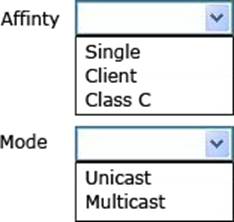
Your network contains two Web servers named Server1 and Server2. Both servers run Windows Server 2012 R2.
Server1 and Server2 are nodes in a Network Load Balancing (NLB) cluster. The NLB cluster contains an application named App1 that is accessed by using the URL http://app1.contoso.com. You plan to perform maintenance on Server1.
You need to ensure that all new connections to App1 are directed to Server2. The solution must not disconnect the existing connections to Server1.
What should you run?
- A . The Set-NlbCluster cmdlet
- B . The Set-NlbClusterNode cmdlet
- C . The Stop-NlbCluster cmdlet
- D . The Stop-NlbClusterNode cmdlet
- E . The Suspend-NlbClusterNode cmdlet
- F . The nlb.exe suspend command
Your network contains two servers named HV1 and HV2. Both servers run Windows Server 2012 R2 and have the Hyper-V server role installed. HV1 hosts 25 virtual machines. The virtual machine configuration files and the virtual hard disks are stored in D:VM. You shut down all of the virtual machines on HV1. You copy D:VM to D:VM on HV2. You need to start all of the virtual machines on HV2. You want to achieve this goal by using the minimum amount of administrative effort.
What should you do?
- A . Run the Import-VMInitialReplication cmdlet.
- B . From HV1, export all virtual machines to D:VM. Copy D:VM to D:VM on HV2 and overwrite the existing files. On HV2, run the Import Virtual Machine wizard.
- C . From HV1, export all virtual machines to D:VM. Copy D:VM to D:VM on HV2 and overwrite the existing files. On HV2, run the New Virtual Machine wizard.
- D . Run the Import-VM cmdlet.
HOTSPOT
Your network contains two Hyper-V hosts that are configured as shown in the following table.
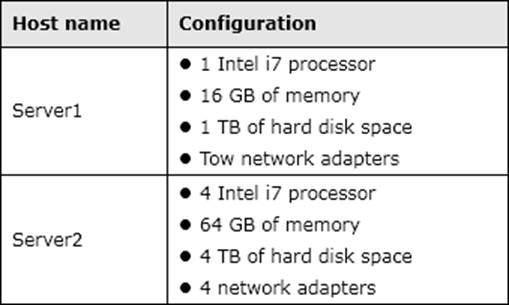
You create a virtual machine on Server1 named VM1. You plan to export VM1 from Server1 and import VM1 to Server2.
You need to ensure that you can start the imported copy of VM1 from snapshots.
What should you configure on VM1? To answer, select the appropriate node in the answer area.
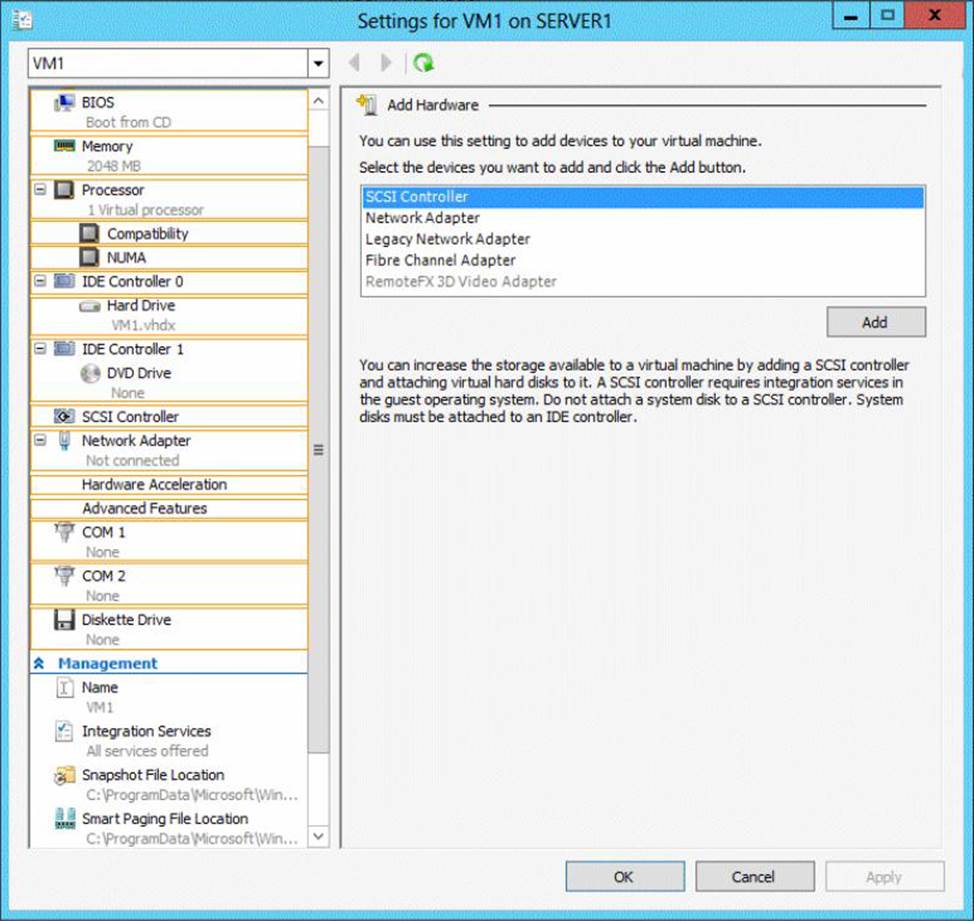
DRAG DROP
Your network contains an Active Directory domain named contoso.com. The domain contains four member
servers named Server1, Server2, Servers, and Server4. All servers run Windows Server 2012 R2.
Server1 and Server2 are located in a site named Site1. Server3 and Server4 are located in a site named Site2. The servers are configured as nodes in a failover cluster named Cluster1. Cluster1 is configured to use the Node Majority quorum configuration. You need to ensure that Server1 is the only server in Site1 that can vote to maintain quorum.
What should you run from Windows PowerShell? To answer, drag the appropriate commands to the correct location. Each command may be used once, more than once, or not at all. You may need to drag the split bar between panes or scroll to view content.

Your network contains an Active Directory domain named contoso.com. The domain contains two member servers named Server1 and Server2. All servers run Windows Server 2012 R2.
Server1 and Server2 have the Failover Clustering feature installed. The servers are configured as nodes in a failover cluster named Cluster1. Cluster1 contains a cluster disk resource.
A developer creates an application named App1. App1 is NOT a cluster-aware application. App1 runs as a service. App1 stores data on the cluster disk resource.
You need to ensure that App1 runs in Cluster1. The solution must minimize development effort.
Which cmdlet should you run?
- A . Add-ClusterGenericServiceRole
- B . Add-ClusterGenericApplicationRole
- C . Add-ClusterScaleOutFileServerRole
- D . Add-ClusterServerRole
HOTSPOT
Your network contains an Active Directory domain named contoso.com. You have a failover cluster named Cluster1 that contains two nodes named Server1 and Server2. Both servers run Windows Server 2012 R2 and have the Hyper-V server role installed. You plan to create two virtual machines that will run an application named App1. App1 will store data on a virtual hard drive named App1data.vhdx. App1data.vhdx will be shared by both virtual machines.
The network contains the following shared folders:
• An SMB file share named Share1 that is hosted on a Scale-Out File Server.
• An SMB file share named Share2 that is hosted on a standalone file server.
• An NFS share named Share3 that is hosted on a standalone file server.
You need to ensure that both virtual machines can use App1data.vhdx simultaneously.
What should you do? To answer, select the appropriate configurations in the answer area.
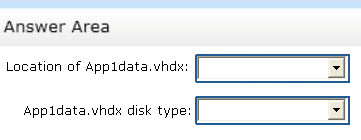
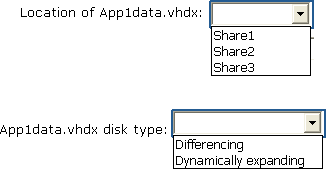
HOTSPOT
Your network contains an Active Directory domain named contoso.com. The domain contains a server named Server1 that runs Windows Server 2012 R2. Server1 has the Active Directory Certificate Services server role installed and configured.
For all users, you are deploying smart cards for logon. You are using an enrollment agent to enroll the smart card certificates for the users.
You need to configure the Contoso Smartcard Logon certificate template to support the use of the enrollment agent.
Which setting should you modify? To answer, select the appropriate setting in the answer area.

Your network contains an Active Directory domain named contoso.com. The domain contains a server named Server1 that runs Windows Server 2012 R2.
The system properties of Server1 are shown in the exhibit. (Click the Exhibit button.)
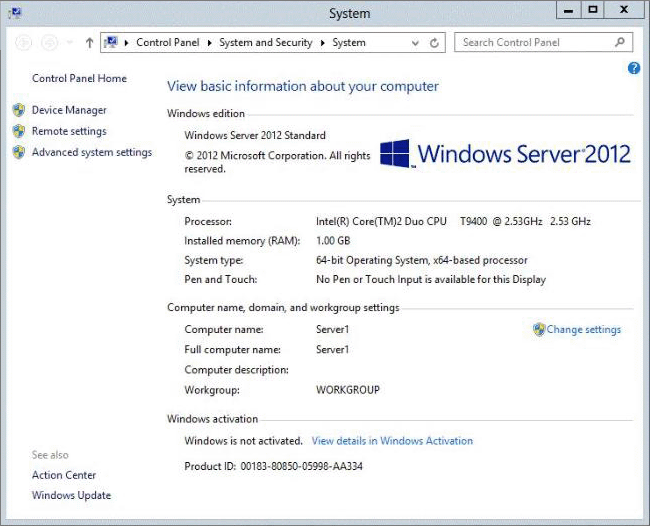
You need to configure Server1 as an enterprise subordinate certification authority (CA).
What should you do first?
- A . Add RAM to the server.
- B . Set the Startup Type of the Certificate Propagation service to Automatic.
- C . Install the Certification Authority Web Enrollment role service.
- D . Join Server1 to the contoso.com domain.
Your network contains a perimeter network and an internal network. The internal network contains an Active Directory Federation Services (AD FS) 2.1 infrastructure. The infrastructure uses Active Directory as the attribute store.
You plan to deploy a federation server proxy to a server named Server2 in the perimeter network. You need to identify which value must be included in the certificate that is deployed to Server2.
What should you identify?
- A . The FQDN of the AD FS server
- B . The name of the Federation Service
- C . The name of the Active Directory domain
- D . The public IP address of Server2
Latest 70-412 Dumps Valid Version with 448 Q&As
Latest And Valid Q&A | Instant Download | Once Fail, Full Refund

